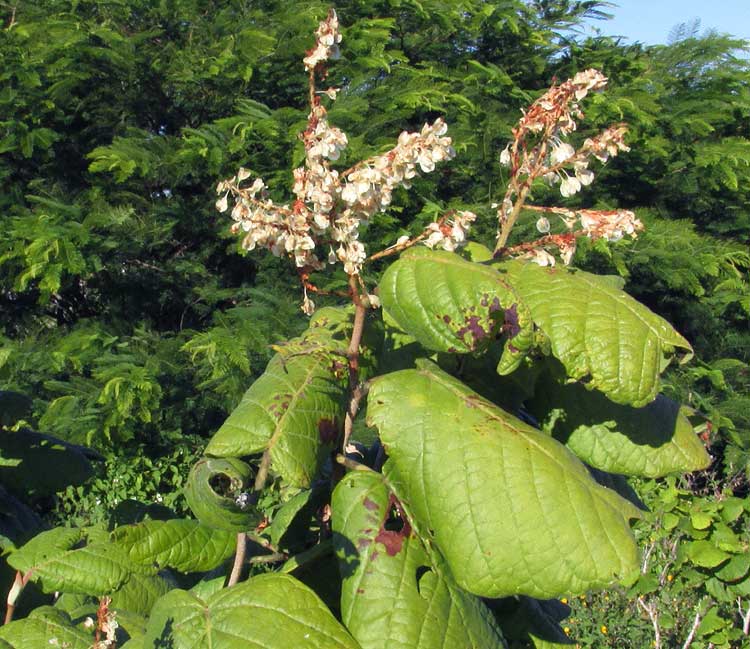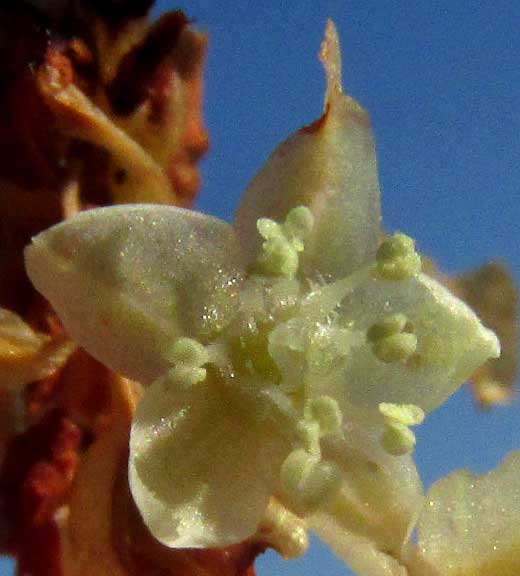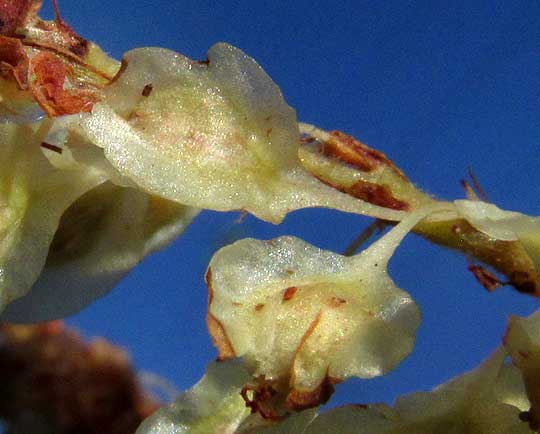Excerpts from Jim Conrad's
Naturalist Newsletter

from the November 23, 2014 Newsletter issued from Río Lagartos, on the Yucatan Peninsula's northern coast (~N21.60°, ~W88.16°), Yucatán state, MÉXICO
"FALSE SEAGRAPE"
Along weedy roadsides out in the savannas south of Río Lagartos a common woody shrub or small tree with large, cow-hoof-shaped leaves nowadays is topped with hand-size panicles of white flowers and maturing fruits, as shown above.
With the rainy season ending and the main growing season therefore coming to a close, the big leaves of most plants of this species are just as bug-eaten, fungusy and curled up as the ones shown in the picture. The moment you see this plant you're reminded of Seagrapes, those woody shrubs with similarly large, rounded leaves, and flowers and fruits at the tips of branches, mostly occurring along sandy coastlines. The small flowers have calyxes with white sepals enlarged to look like white corolla lobes, and that's also similar to Seagrape flowers, as you can see below:

However, Seagrape bushes produce succulent, grape-like fruits that are good to eat, while the maturing flowers on this bush indicate that the resulting fruit will have papery "wings" much like the North's weedy Dock plants, genus Rumex, which are members of the Buckwheat or Smartweed Family, the Polygonaceae. Some developing, Dock-like "winged fruits" are shown below:

Well, this peculiar combination of features seeming like a mixture between two such outwardly dissimilar plants as Seagrapes and Dock is interesting, because Seagrape also belongs to Dock's Buckwheat Family. So, here we have a member of the Buckwheat Family combining features in a way unlike anything we've seen before.
This is NEOMILLSPAUGHIA EMARGINATA, apparently with no English name, not even an editor's made-up one. The Maya are reported as calling it Sak iitsa' . "False Seagrape" seems like a useful name, so that's what I'll begin calling it, at least in my mind, but always enclosed in quotation marks, to signify that it's a made-up.
We can say, then, that "False Seagrape," is endemic to the Yucatan Peninsula Biotic Province, which embraces the Yucatan Peninsula and northern lowland Guatemala. Among the local Maya it's recognized as a fine nectar producer for their bees, and as a wood source for charcoal production.